The camels were crowded into a circle, which we could barely make out as we approached. “We” consisted of Naka, my guide, Nasa my driver. Girl, boy. She was my translator. And me, of course, being one who adores camels and anything else with paws, pads or whatever constitutes feet.
We stopped, and all the camels turned as one.
“Yes? You here to help?”
As clear a question as there ever was one. I leapt out of the van and strode across the sandy soil. It was hot. The camels, many of them quite young, all had the bone piece that is pushed through the muzzle to keep them under control. Not my custom, not my country, how I feel about it is none of my beeswax.
As I do with all unknown animals, I slowed down and stopped. A large female stepped towards me, no malice, no danger implied. I stepped towards her. We did this until we met in the middle.
You approach all camels (and most horses) on the left, as that is the mounting side, what they are used to. I reached up and tentatively scratched behind her ear, which was marked with a metal ring.
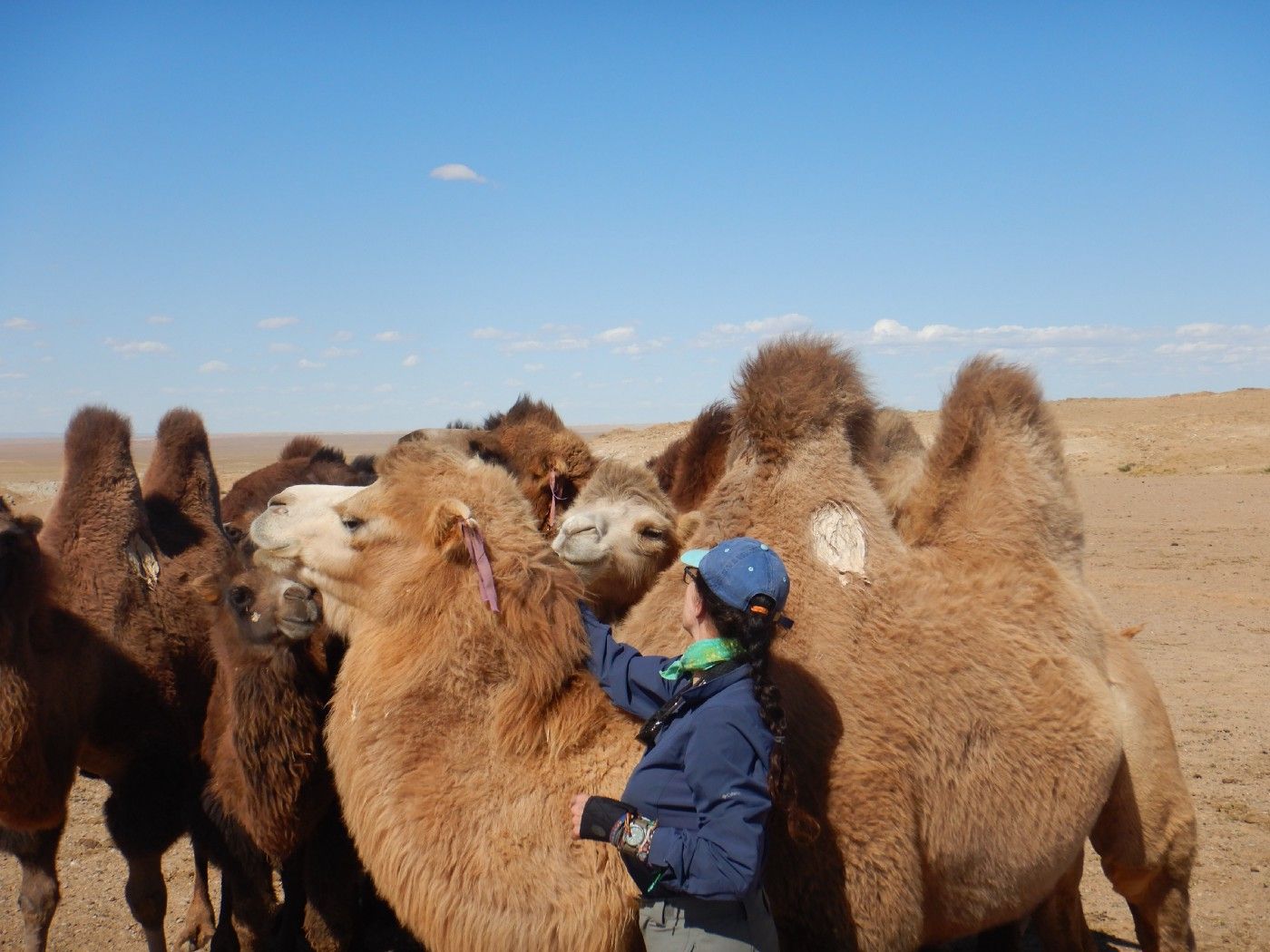
She closed her eyes and bent her head in my direction. Success. The other camels approached. One stuck its head over her great curved neck in that universal
“hey whatcha doin’?” Gesture. Everyone totally calm. Just watching. They wanted something.
As Naka and Nasa approached, the rest of the herd crowded around. Instantly, Nasa knew what they wanted.
Water.
A well was in the middle of the mob. Basically a hole with a wooden door, barely held together, and a bucket with barely a foot of thin rope. The water was a long way down. A trough, constructed of a few tires that had been cut open and set together, ran off to the side.
By this time the entire herd had gathered around us and were pressing in. Nasa started by getting a longer piece of rope from our van, then fashioning a longer drop. Soon, water was coming down the trough in spurts, and we had some two hundred very large and very, very, thirsty mammals fighting to get close and get a drink.
It was slow damned work. Nasa quit for a smoke break and I took over, grateful for the exercise. I slipped a rope loop around my right hand so as not to lose the rope and the bucket and heaved. Bucket after bucket after bucket, the great warm crush of camels nearly sending me face first into the well at one point.
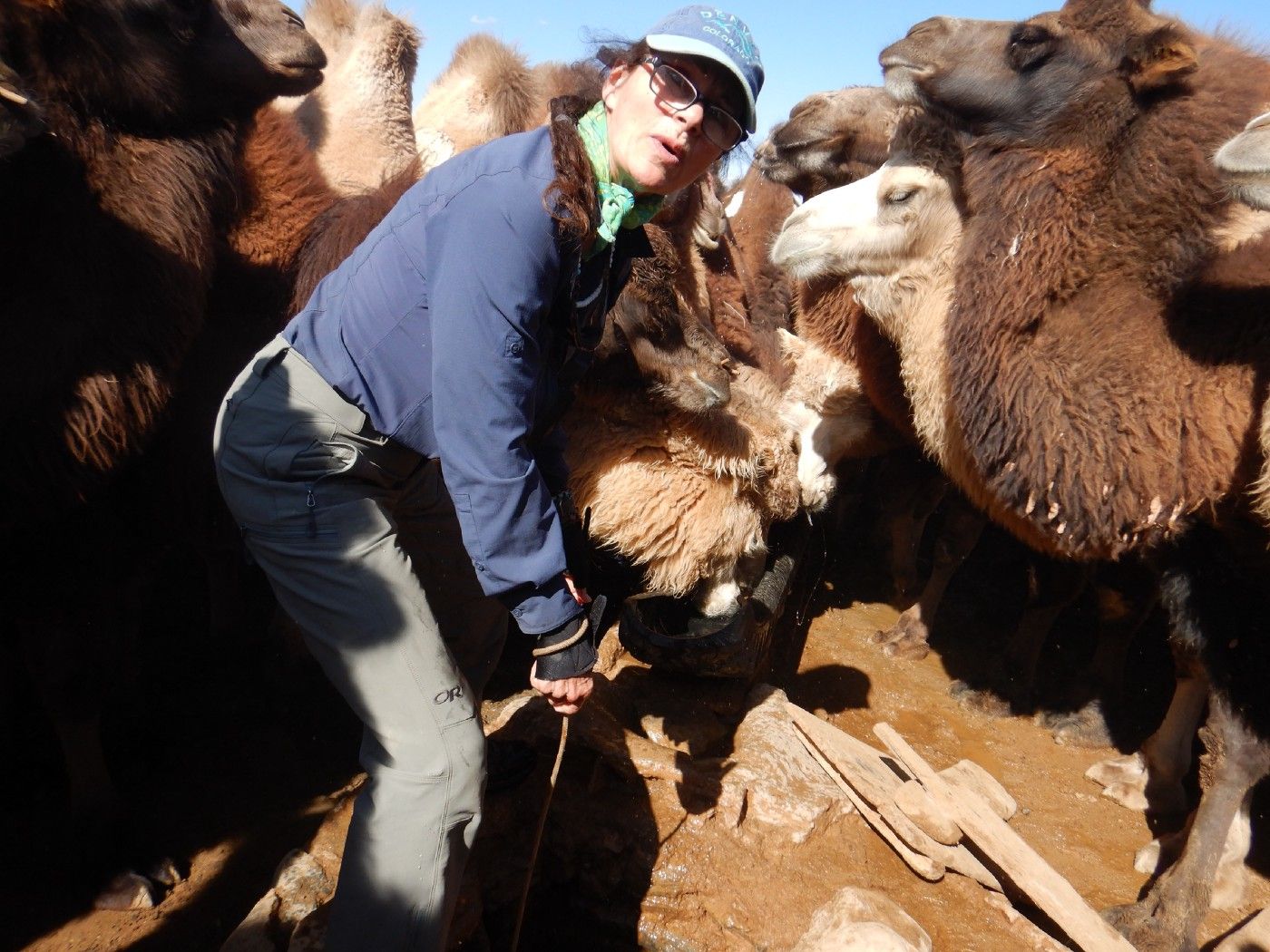
The camels, even given their clear need for water, were quite gentle. They were thirsty but not aggressive, and if we waved them back to get them to get in line (not necessarily willingly but these are camels, mind you) they gave way without teeth, spit or kicks. I’ve learned a long time ago that if you approach very large animals with both respect and affection, and demonstrate quickly that your hands are for good things, you don’t have much to fear. Approach with fear and you are likely to get attacked. It’s like a radio signal.
I lost count of how many buckets I sloshed. It was about twenty minutes’ worth, and given that each camel could likely slurp up some fifty gallons or thereabouts ( I am no expert on this), I would be doing this for several days at least. At the rate I was going, they were barely getting started, and my lower back was already barking at me.
Nasa found another well nearby with a pump. I pushed my way very gently through the mass of brown, yellow and yes, camel-colored fur and walked towards the second location. As one, the entire herd followed again. They stood, hopeful, long lashes batting, as Nasa battled with the pump.
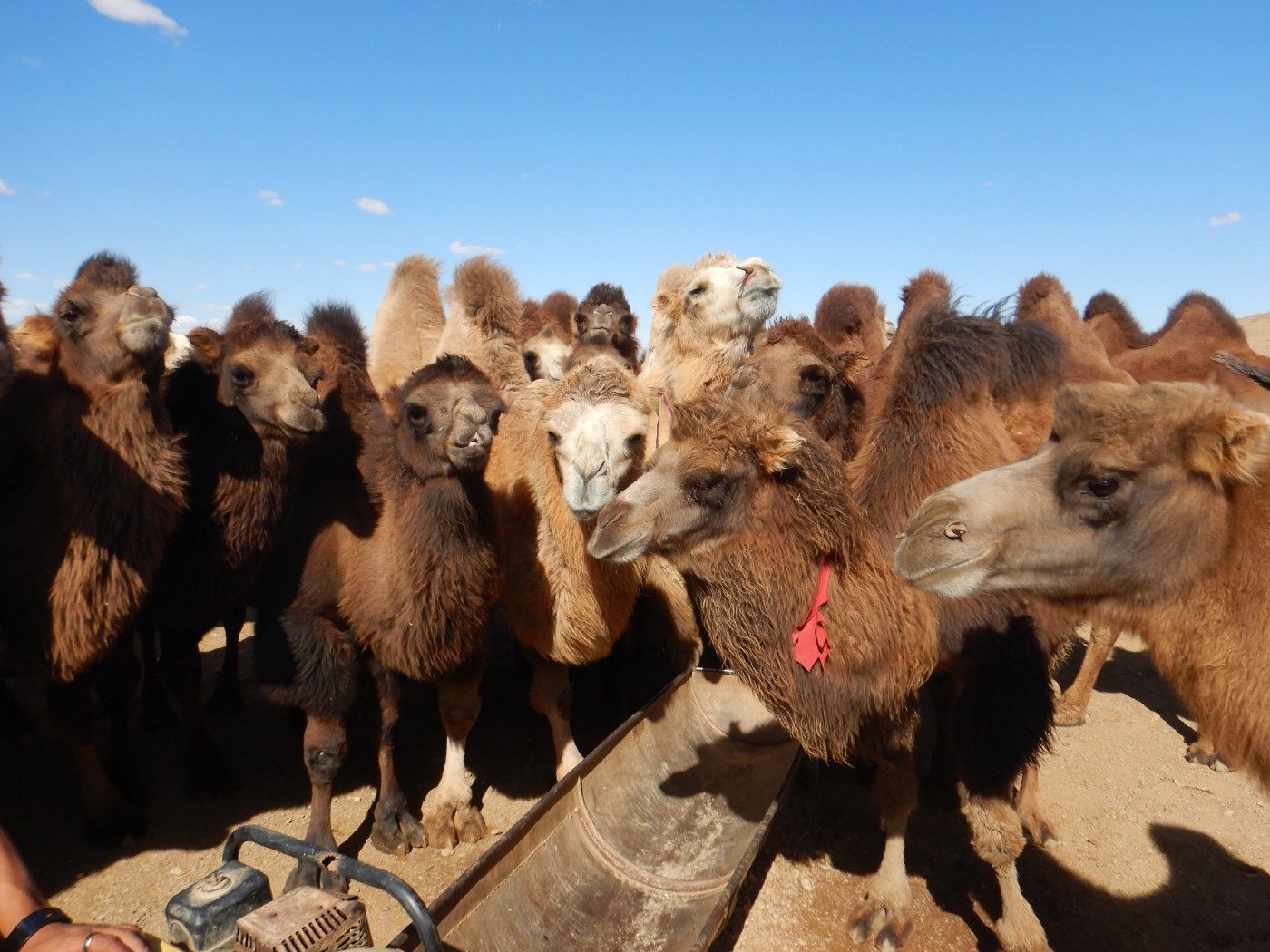
It belched, whirred; all the camels’ heads went down. No water.
We did this several times.
By this time Nasa and I were sweating bullets. The poor camels were genuinely thirsty. So I recovered the rope and back we marched to the first well.
I went back to work, hoping that a different lineup of camels had been able to worm their way to the front. This time, one enterprising camel balanced his weight on his left leg, then braced his right footbed, which was ginormous, on the top of my left boot.
He wasn’t light. However, most of his weight was on his left, so I was able to gently convince him to move your fucking foot off my boot please and continued to slosh.
It was all very convivial, with the exception that the camels really were awfully thirsty.
And here’s the piece. The owner, after my back had nearly given out, finally drove up and explained that he’d be providing water shortly.
However, just like in Africa and California and Colorado and a lot of other places in the world, you might just as easily replace that mob with people.
Families. Kids.
You. Me. People we love.
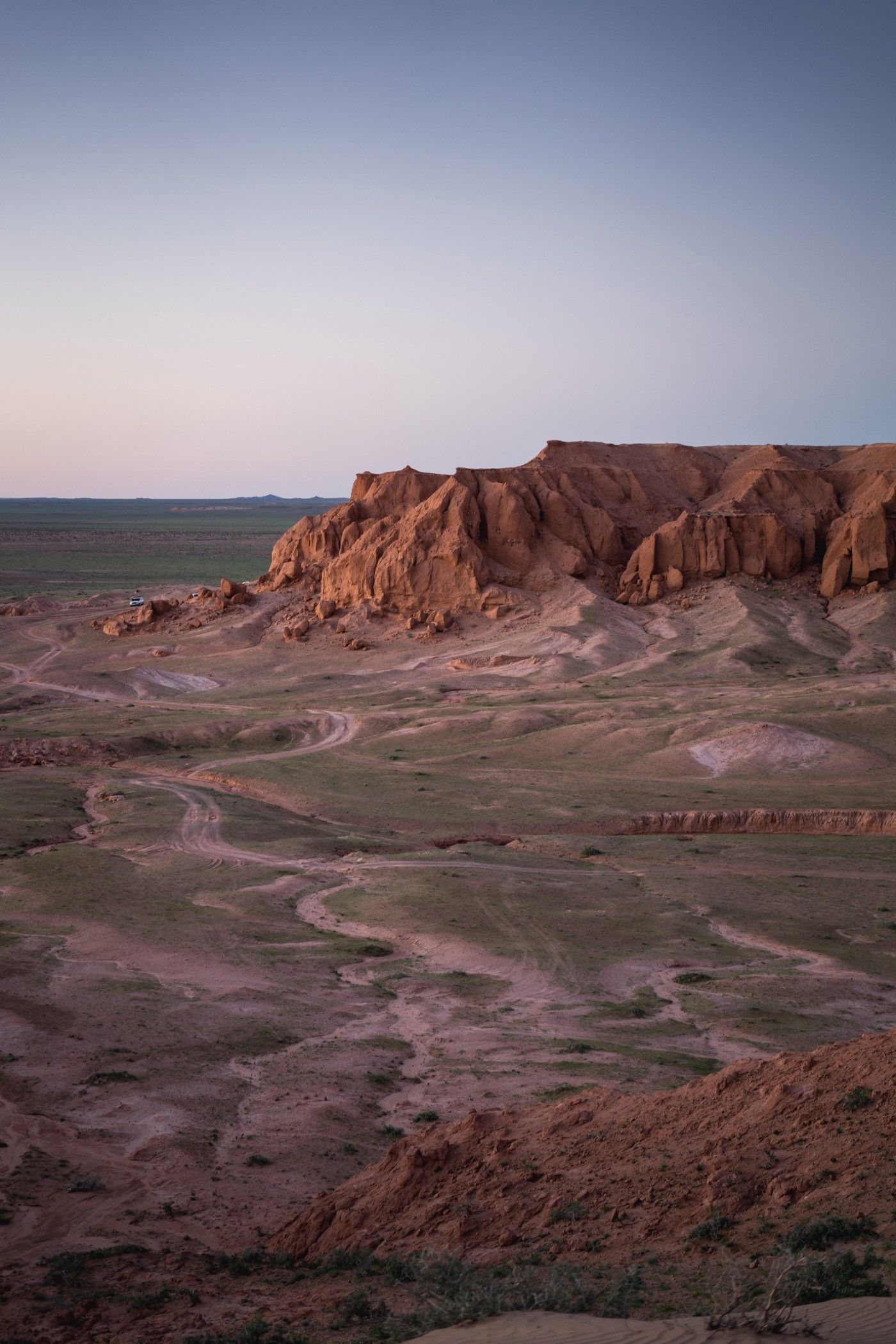
The Gobi is a most unkind place for animals that have run out of water. So is Southern Africa. Northern Africa. So are a hundred hundred other places in the world. Here the bones lie bleached and picked clean by raptors and wolves and all the insects that do the cleaning work. They are everywhere, the winters harsh. On people too. Nomads can melt snow. There isn’t much snow in Africa, including on top of Kilimanjaro, which used to be famous for it. I’ve been there. What’s left is so far away from the trail you don’t dare walk out to touch it. In Colorado, we make our powder these days. Fake snow for fake skiing vacations, fake snow that doesn’t exactly translate into raging rivers that can feed Palm Springs’ golf courses in the middle of the fucking desert.
But that’s just me, one Coloradan barking about all those claims to a diminishing river. As will we all.
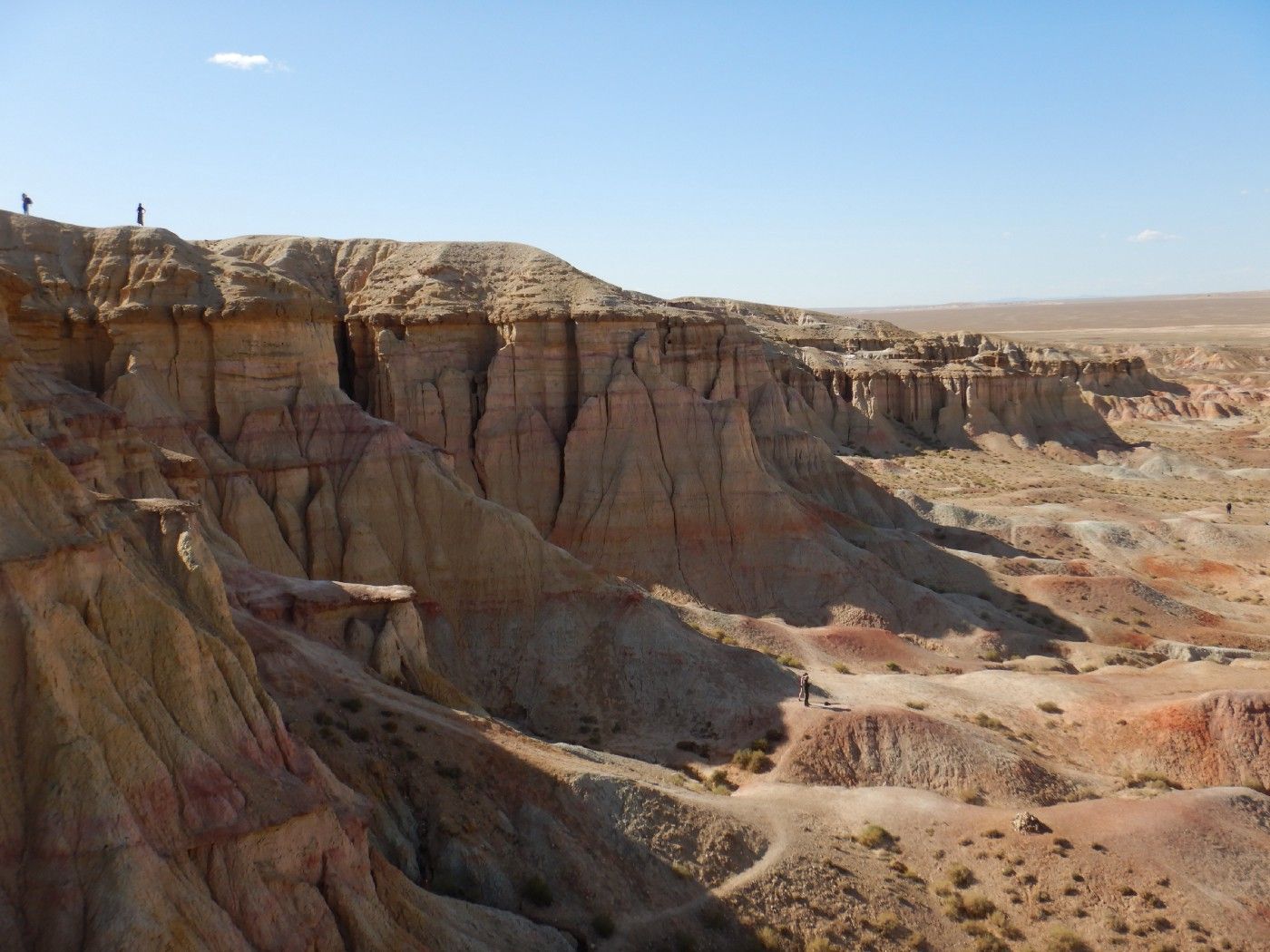
The nomads of Central Asia are just as married to the water as anyone, for their vast herds of goats, sheep, horses and yes, camels die without it. Camels may last a bit longer, eating succulents which store water in their leaves most of the year. But they will succumb.
The Gobi desert lunch spot we chose because of a near-tropical outburst of gorgeous weeds deep in the desert rocks also had a dead camel. It was its time, as it comes for all of us. There was a spring. Green everywhere, for about ten feet. Then hot sand in all directions. Water is life.
For the mob, who knows?
Those who live in cities, who turn on a spigot and laze happily under the hot water for however long it pleases them, have little notion of the drying world. Those who never travel, have no notion of the changing landscape, the unpredictable weather, the suddenly parched lands that used to be Paradise. If you do travel far afield, you may have seen it. It’s a long way from those five-star resorts.
While coming down Mt. Kenya last November with the guides from eTrip Africa, the senior of the three told me about new plans for a pricey five star resort right in the middle of the migration territories. Where the water is. The resort will suck up the water, and the animals will have to head elsewhere, if they can make it.
To my thinking, that’s one hell of a short-sighted business plan. Bosco agrees. To which he added, “We don’t think very far ahead.”
An oasis with a bucket, with a rope so short I couldn’t get water to the mob. The water is going away. Ground water will only last so long. Even the pump couldn’t draw it up for those sweet-faced, long-lashed Bactrians. Water has to come from somewhere, until it doesn’t.
I gave the big girl one more scrub behind the ears, which she tolerated with that regal grace that only camels can get away with.
can only do what little I can. Perhaps that’s better than nothing at all.
Comments powered by Talkyard.